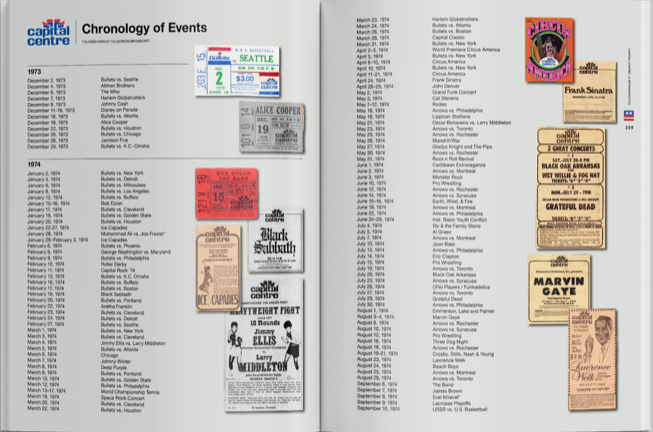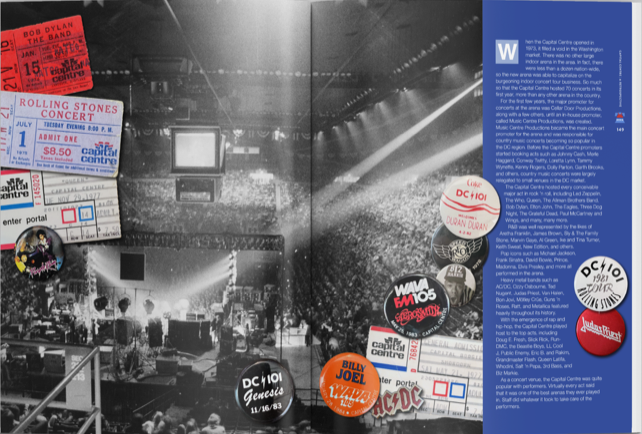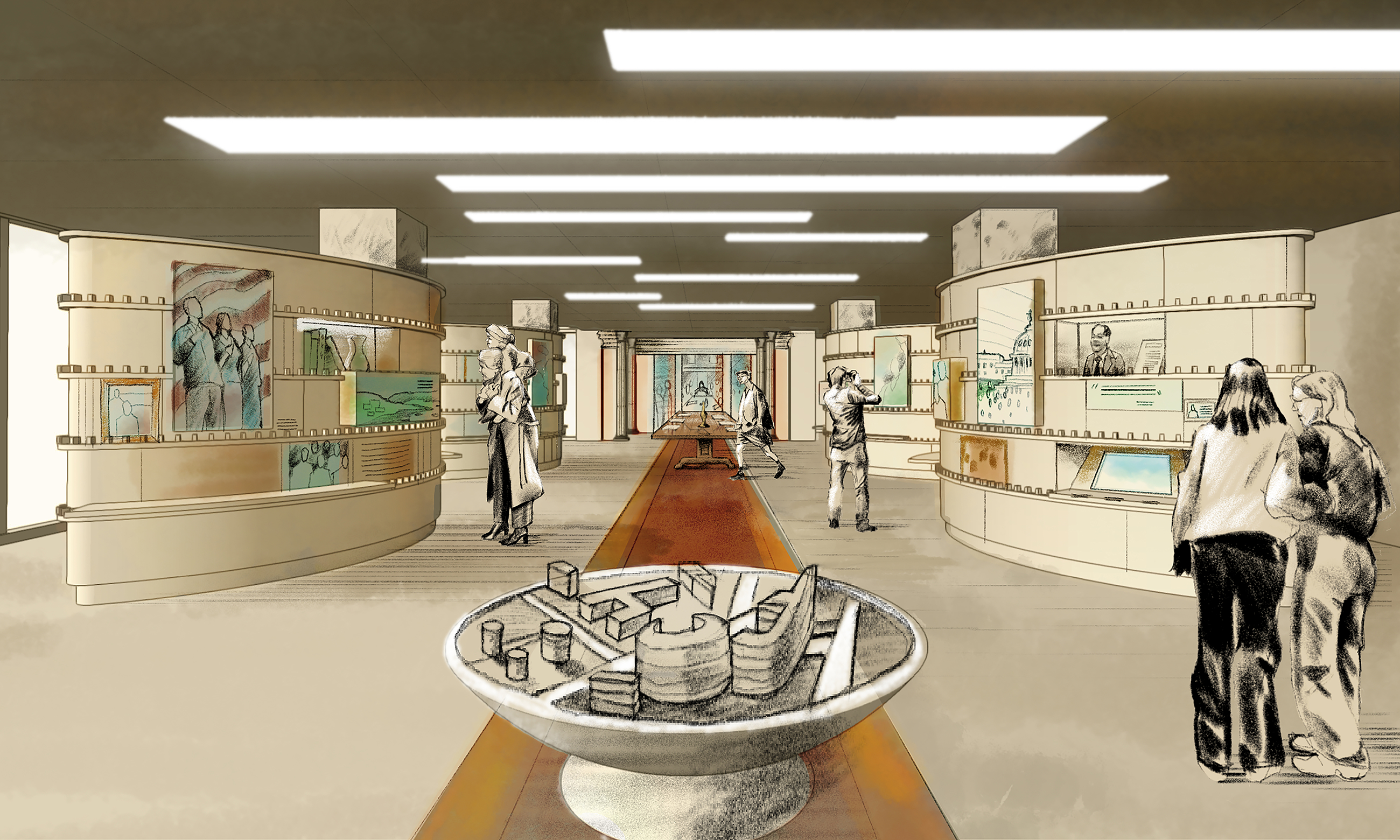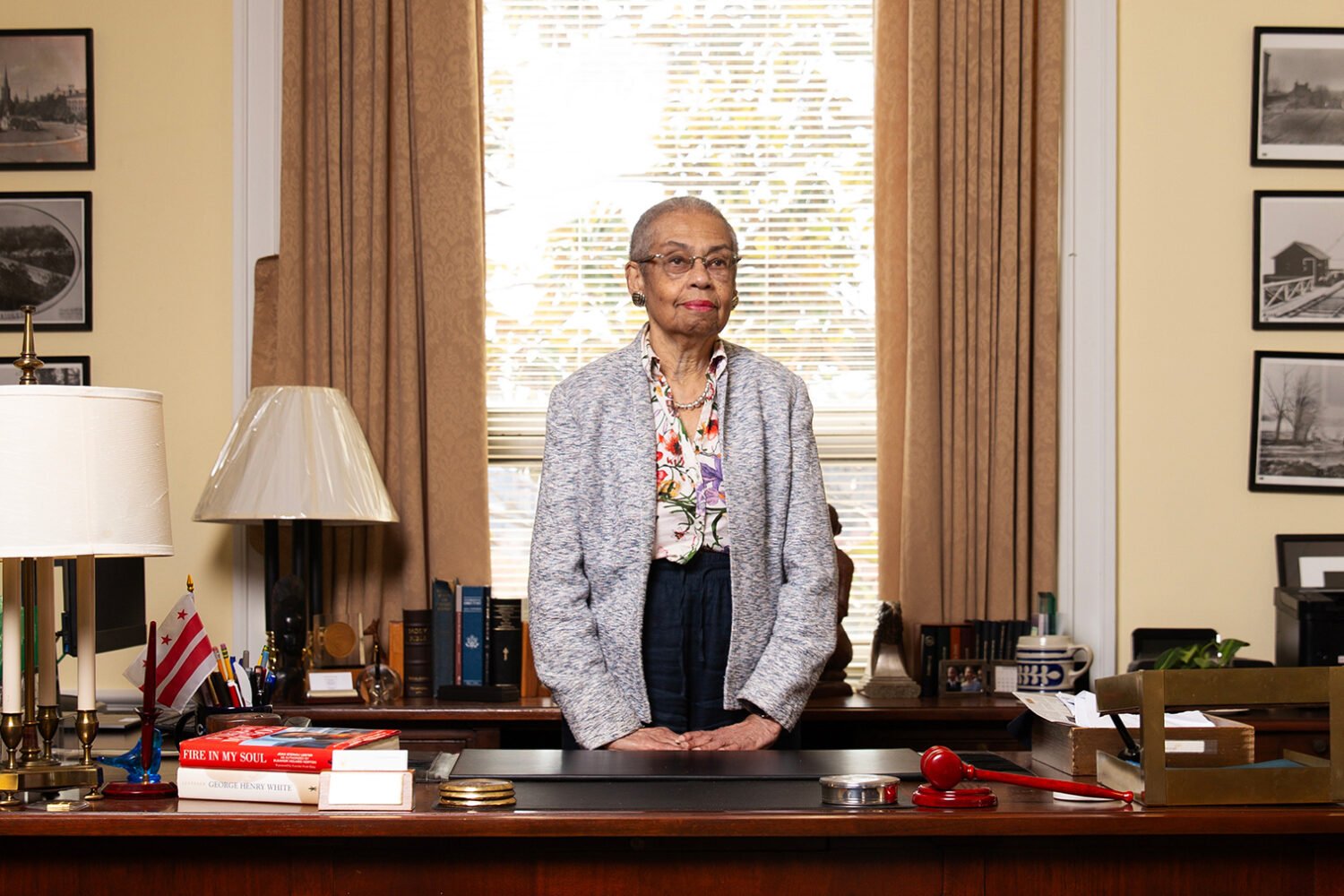Washington hasn’t always had the happiest relationships with its sports arenas. The Uline Arena/Washington Coliseum became a trash transfer station after its glory days (it’s now an REI). RFK is in the middle of a slow-motion demolition. And FedEx Field is such a sucky venue that Taylor Swift skipped the region entirely.
But the Capital Centre in suburban Maryland? “Everybody has fond memories of that place,” says Richard Friend. Which is why Friend, a graphic designer and part-time local historian, teamed up with some of his fellow local-history obsessives to create Capital Centre: A Retrospective, a deluxe book designed to be released in time for the Cap Centre’s 50th anniversary this December. You have until the end of the weekend if you’d like to help back the project on Kickstarter; after that you’ll have to hope you can snag a copy.
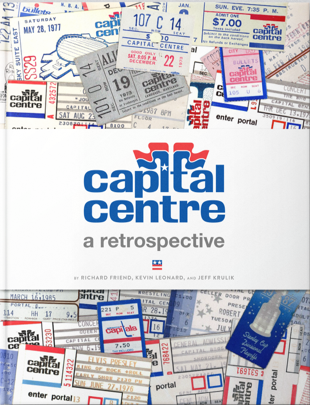
The Capital Centre was once DC’s premiere venue for sports and concerts. It was home to the Washington Bullets and the Washington Capitals, and its parking lot was where the beloved cult classic Heavy Metal Parking Lot was filmed.
[su_youtube url=“https://www.youtube.com/watch?v=XWWQ8dLkPe8”]
In fact, Friend says, the book came about after he connected with Heavy Metal Parking Lot co-director Jeff Krulik at a screening of Krulik’s film Led Zeppelin Played Here. Krulik put Friend and his fellow “Laurel History Boy” Kevin Leonard in touch with some Cap Centre alumni, and the project snowballed from there.
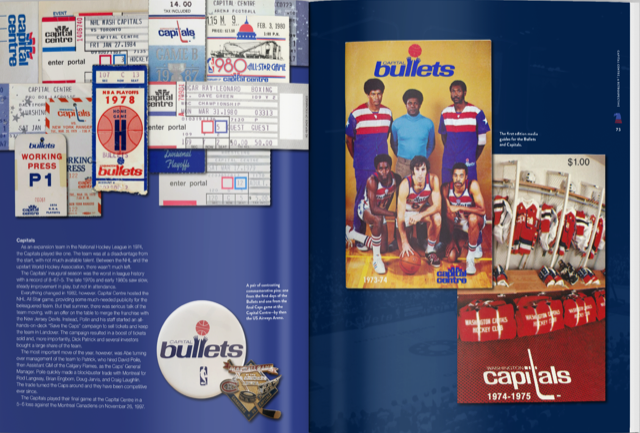
The book is organized in four parts, each named for one of the venue’s parking lots (Liberty Bell, Eagle, Stars and Stripes, and Capitol). One section is about the building itself and the people who worked there. Another is about its sports history. Yet another looks at its grand history as a concert venue. And finally there are the events that defy categorization, like the Ice Capades and truck pulls. There will also be a 60-page chronology in the back so you can check your own memories against actual dates. (This reporter is curious to find out details of his first proper concert, featuring the Cars.) Each section will have a short written introduction and then deep captions on the hundreds of photos Friend and Co. have found through months of research.
As time goes on throughout the book, Friend says, you can see the economics of the city changing. Ticket prices go up, of course, and at some point Ticketmaster replaces the venue’s in-house ticketing system. The venue’s name changed to USAir Arena in 1993, the first major venue to sell its naming rights.
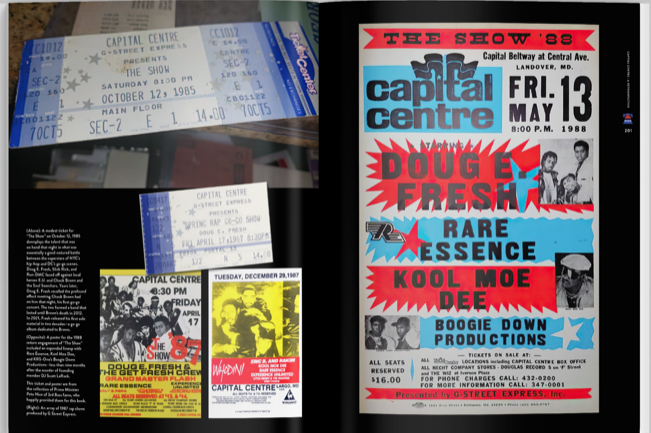 The arena went kerblooey in 2002 after 29 years of service, having been rendered surplus by Bullets and Caps owner Abe Pollin’s new downtown venue in 1997. Now all that remains are the memories, and the lingering question of whether the venue was in Landover or Largo. (Friend isn’t sure but notes the venue’s stationery read Landover.) Among all the memories shared by former employees, Friend managed to track down the fact that a local graphic designer, Frederick Reithlingshoefer, created not just the arena’s memorable visual identity but also the Caps’ logo.
The arena went kerblooey in 2002 after 29 years of service, having been rendered surplus by Bullets and Caps owner Abe Pollin’s new downtown venue in 1997. Now all that remains are the memories, and the lingering question of whether the venue was in Landover or Largo. (Friend isn’t sure but notes the venue’s stationery read Landover.) Among all the memories shared by former employees, Friend managed to track down the fact that a local graphic designer, Frederick Reithlingshoefer, created not just the arena’s memorable visual identity but also the Caps’ logo.
If you back the book on Kickstarter, you’ll receive a copy with free shipping, hopefully before Christmas, Friend says. After that you’ll have to buy a copy on Friend’s website, and once they’re gone, they’re gone. The experience of reading it isn’t linear, Friend says: “It’s not something you have to read cover to cover. You can flip through it at any point.” People with short attention spans (or just about anyone who appeared in Heavy Metal Parking Lot) will certainly appreciate that.
